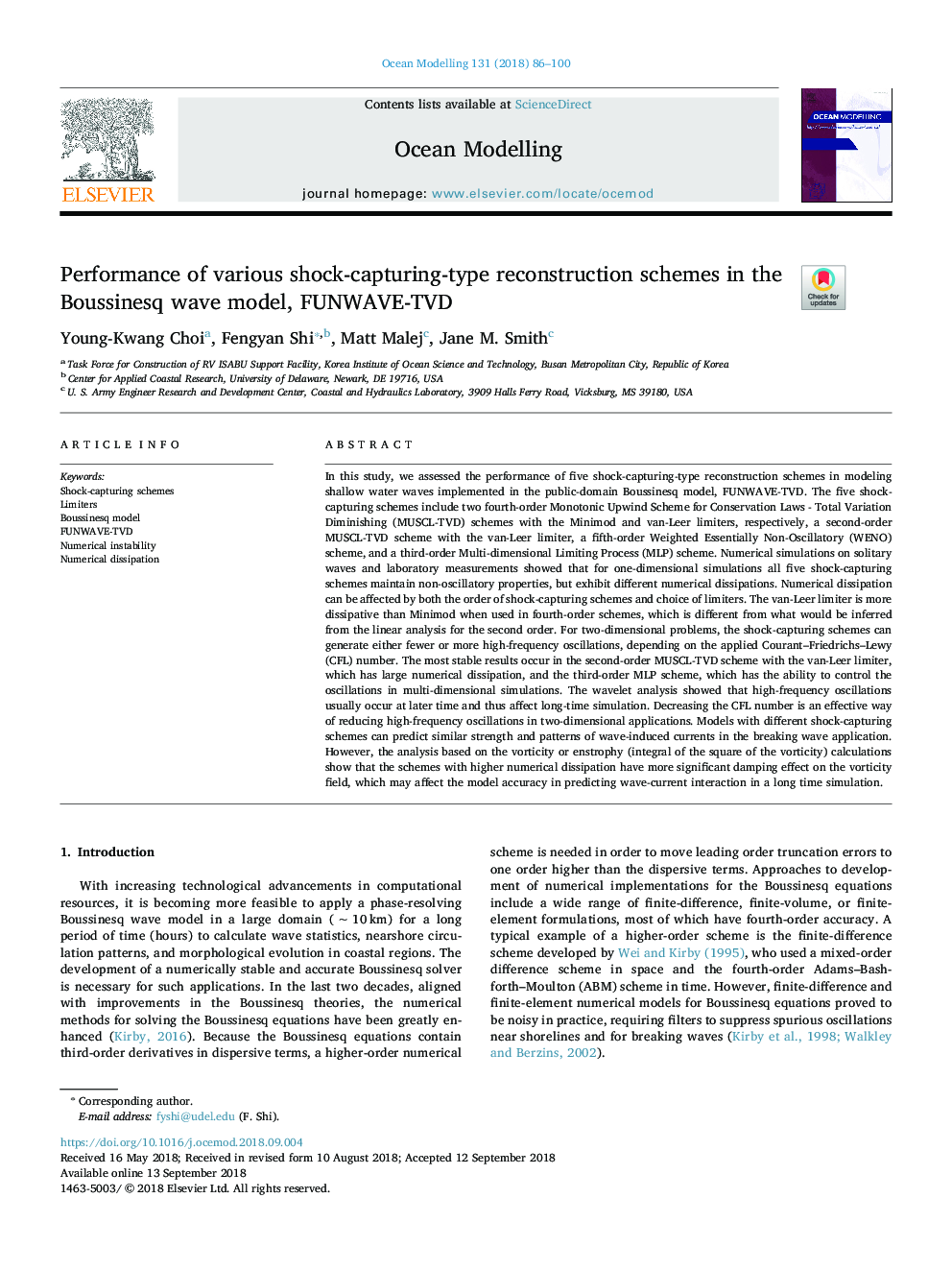| کد مقاله | کد نشریه | سال انتشار | مقاله انگلیسی | نسخه تمام متن |
|---|---|---|---|---|
| 10144868 | 1646316 | 2018 | 15 صفحه PDF | دانلود رایگان |
عنوان انگلیسی مقاله ISI
Performance of various shock-capturing-type reconstruction schemes in the Boussinesq wave model, FUNWAVE-TVD
دانلود مقاله + سفارش ترجمه
دانلود مقاله ISI انگلیسی
رایگان برای ایرانیان
کلمات کلیدی
موضوعات مرتبط
مهندسی و علوم پایه
علوم زمین و سیارات
علم هواشناسی
پیش نمایش صفحه اول مقاله

چکیده انگلیسی
In this study, we assessed the performance of five shock-capturing-type reconstruction schemes in modeling shallow water waves implemented in the public-domain Boussinesq model, FUNWAVE-TVD. The five shock-capturing schemes include two fourth-order Monotonic Upwind Scheme for Conservation Laws - Total Variation Diminishing (MUSCL-TVD) schemes with the Minimod and van-Leer limiters, respectively, a second-order MUSCL-TVD scheme with the van-Leer limiter, a fifth-order Weighted Essentially Non-Oscillatory (WENO) scheme, and a third-order Multi-dimensional Limiting Process (MLP) scheme. Numerical simulations on solitary waves and laboratory measurements showed that for one-dimensional simulations all five shock-capturing schemes maintain non-oscillatory properties, but exhibit different numerical dissipations. Numerical dissipation can be affected by both the order of shock-capturing schemes and choice of limiters. The van-Leer limiter is more dissipative than Minimod when used in fourth-order schemes, which is different from what would be inferred from the linear analysis for the second order. For two-dimensional problems, the shock-capturing schemes can generate either fewer or more high-frequency oscillations, depending on the applied Courant-Friedrichs-Lewy (CFL) number. The most stable results occur in the second-order MUSCL-TVD scheme with the van-Leer limiter, which has large numerical dissipation, and the third-order MLP scheme, which has the ability to control the oscillations in multi-dimensional simulations. The wavelet analysis showed that high-frequency oscillations usually occur at later time and thus affect long-time simulation. Decreasing the CFL number is an effective way of reducing high-frequency oscillations in two-dimensional applications. Models with different shock-capturing schemes can predict similar strength and patterns of wave-induced currents in the breaking wave application. However, the analysis based on the vorticity or enstrophy (integral of the square of the vorticity) calculations show that the schemes with higher numerical dissipation have more significant damping effect on the vorticity field, which may affect the model accuracy in predicting wave-current interaction in a long time simulation.
ناشر
Database: Elsevier - ScienceDirect (ساینس دایرکت)
Journal: Ocean Modelling - Volume 131, November 2018, Pages 86-100
Journal: Ocean Modelling - Volume 131, November 2018, Pages 86-100
نویسندگان
Young-Kwang Choi, Fengyan Shi, Matt Malej, Jane M. Smith,